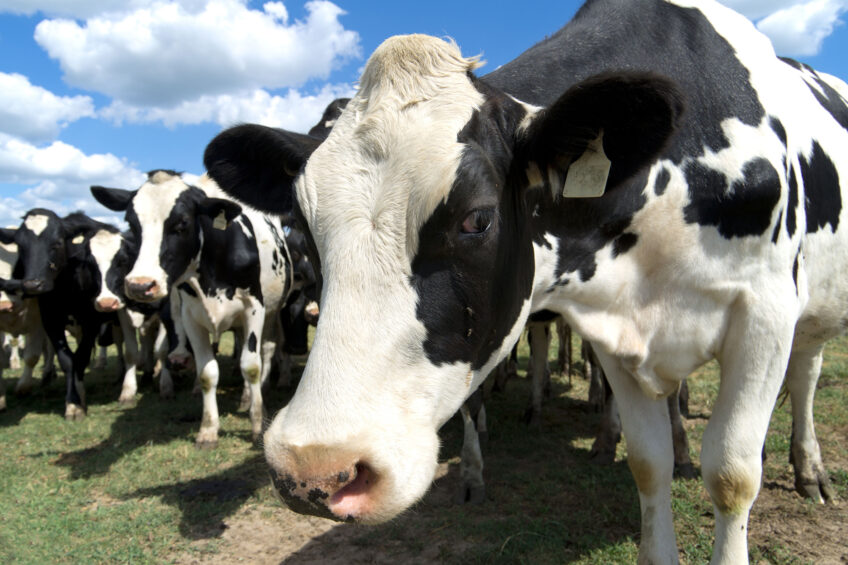A focus on net zero livestock in the UK

New innovations capable of making significant reductions in emissions in the UK livestock sector are needed to meet government goals set for 2050.
With agriculture contributing 11% of national greenhouse gas emissions in 2020, the Centre for Innovation Excellence in Livestock (CIEL) has commissioned a report that looks at how to bridge the current gap between likely emission reductions and goals set.
Mark Young, innovations specialist at CIEL, said the ‘Bridging the Gap’ report – the third in a series on moving to net zero emissions – had been produced after it became clear that the sector wasn’t able to get to the goal of 64% cuts by 2050 demanded by the UK’s Climate Change Committee. The sobering thought was that the sector was only likely to be able to get to 24% cuts using existing technology, with a gap of 40%.
Young said innovation across health and genetics, nutrition, waste and land management provided further opportunities for sector-wide emissions reductions and sustainable food systems.
Health and genetics
Innovations focusing on improving animal health by boosting immunity through vaccination against endemic disease or prophylactic health products can increase productivity while reducing resource use, cost and GHG emissions.
Genetic improvement can contribute to reducing emissions through general gains in efficiency for all livestock and aquaculture systems. For ruminants, genetics can specifically focus on lowering methane emissions from enteric fermentation, but consideration must be given to how these impact productivity and efficiency. The report calls for further research and funding in this area, targeted at increasing the collection of CH4 emissions performance data (phenotypes), use of restricted selection indices and the development of genetic tools to manage the rumen microbiome.
Nutrition
Methane emissions from the ruminant microbiome can also be targeted using CH4 inhibitors or vaccines. At present, several CH4 suppressing products are at various stages of market readiness, with potential emissions reductions of between 12 and 37%. Although the UK government is anticipating the entry of safe and high efficacy products to the UK market from 2025, no CH4 inhibitor is currently available that ensures the consistent supply of effective and safe dosage to grazing animals.
CH4 vaccines remain at an early development stage but there have been promising results from New Zealand. Best case scenario models have estimated that annual CH4 emissions of UK livestock could be reduced by 30% (6.8MtCO2 equivalent).
The report says nutrition, through both enteric fermentations and feed production, is the dominant source of emissions for livestock and aquaculture. Replacing soya or fishmeal with low carbon, less resource-intensive novel protein feeds can significantly reduce emissions but further research is needed to assess production impacts at scale.
“Legislation in this area that is fit for purpose needs to align with, and facilitate, feed innovations right through to implementation if we are to address the urgent need for improvements in this major area to deliver 2050 net zero targets,” said Young.
Waste
Improving manure management using innovative processing methods such as plasma treatment of slurry can bring about major emissions reductions of ammonia and methane. There is a need for innovation to provide green energy to drive on-farm plasma units to minimise the carbon footprint.
Other manure additives and novel data approaches underpinning best management practices can further contribute to mitigating emissions. The focus has to be on nutrient circularity, so a systems approach is needed to exploit potential synergies and balance trade-offs while closing the nutrient loop.
Land
Manure management can further mitigate emissions by returning carbon to the soil. Innovative approaches to optimise soil carbon sequestration include multispecies swards and forage crops, new technologies for measuring and monitoring soil carbon, and increased focus on subsoil for long-term and more stable carbon storage. As a soil amendment, biochar has been shown to boost soil carbo while improving soil quality but there are still knowledge gaps on its long-term stability in soil.
More data is needed at farm level with greater technological developments and improved data capture systems if nutrient management is to be enhanced using a precision agriculture approach.
Young believes that accelerating innovation is critical for the livestock sector to meet its GHG emissions targets and CIEL has put forward a 4-point plan to help maximise uptake:
- Boost farmer engagement and carry out capacity building.
- Government should provide enabling regulation and policy.
- There should be effective financial flows.
- This should take place across the supply chain and with cross-sector collaboration.
“Collectively, these areas are where a major proportion of resources should be focused to deliver the emission reductions needed from the livestock sector. We expect these reductions will come from lower emission feed production systems, increased feed efficiency, improved animal health and greater nutrient circularity,” said Young.
*The report, ‘Net Zero & Livestock: Bridging the Gap Report July 2023, can be found here.
Join 13,000+ subscribers
Subscribe to our newsletter to stay updated about all the need-to-know content in the dairy sector, two times a week.










